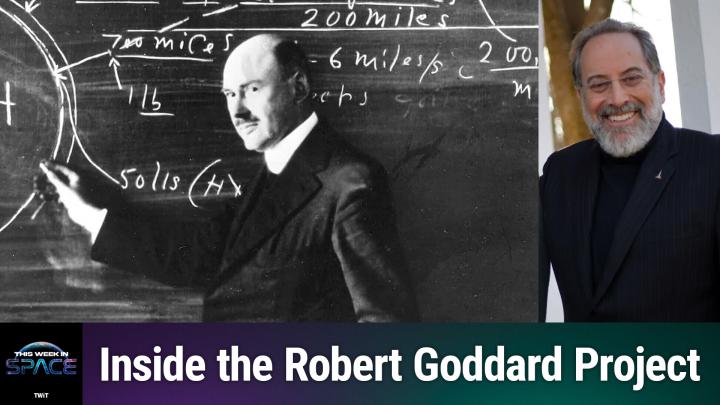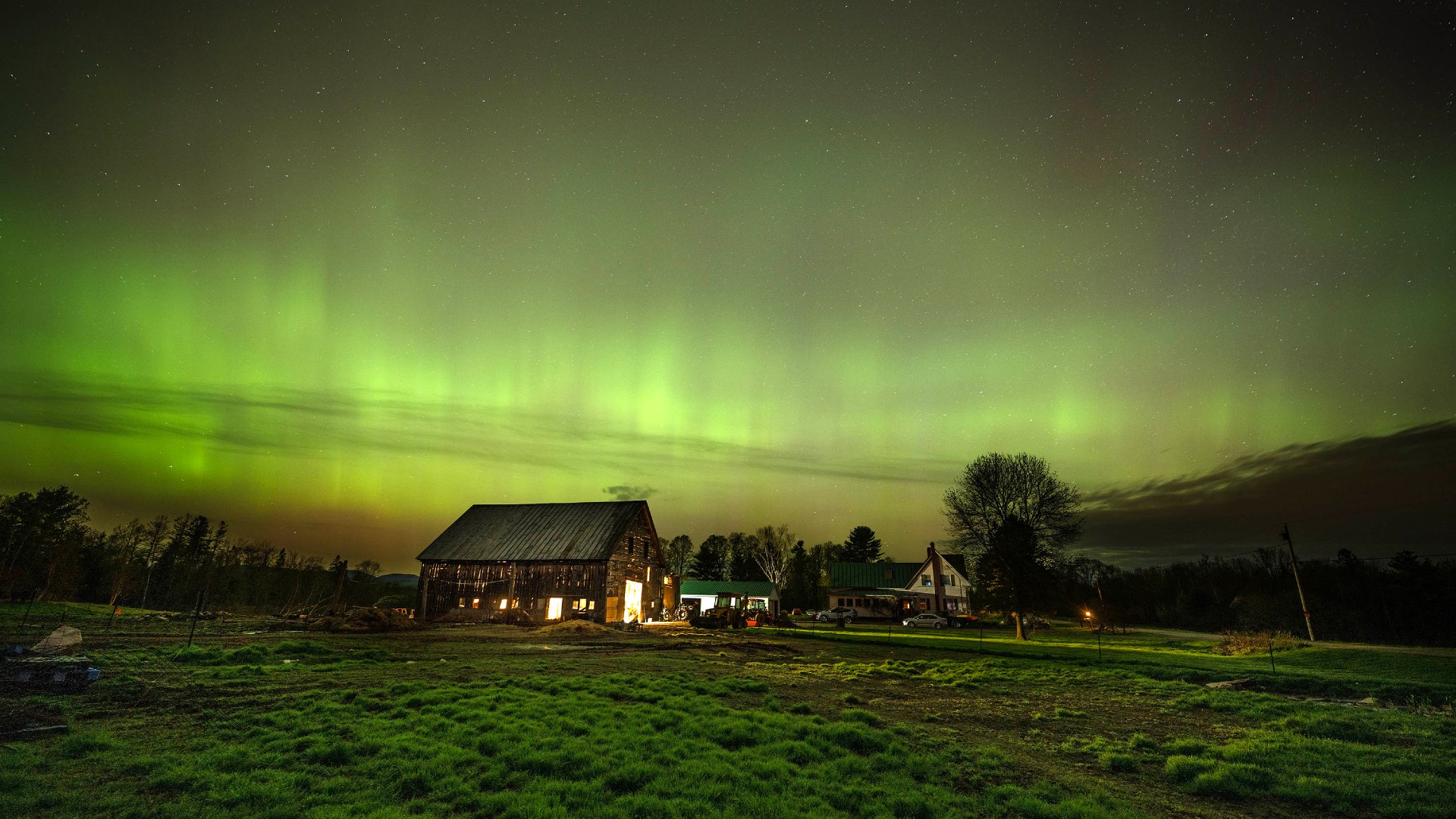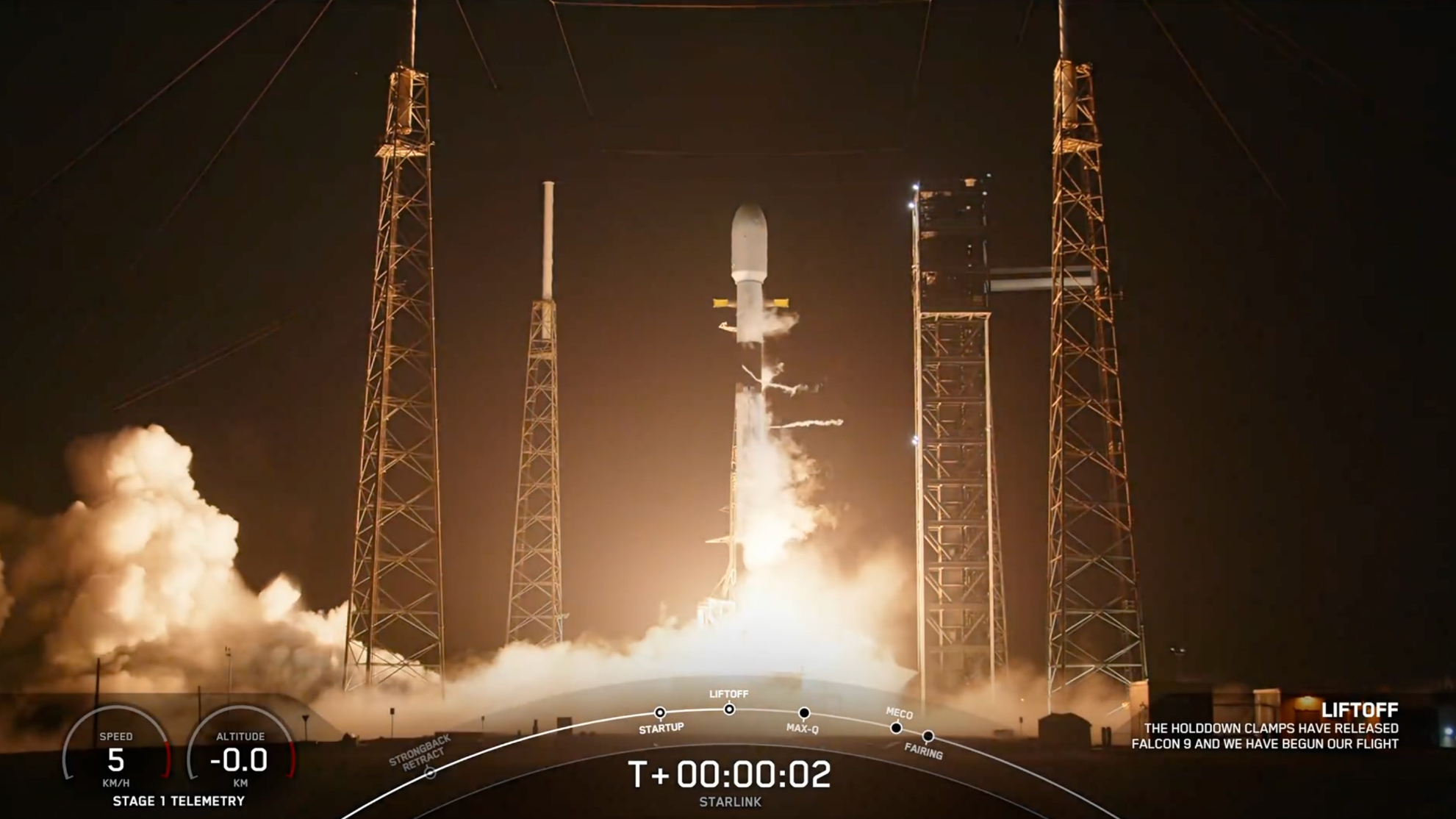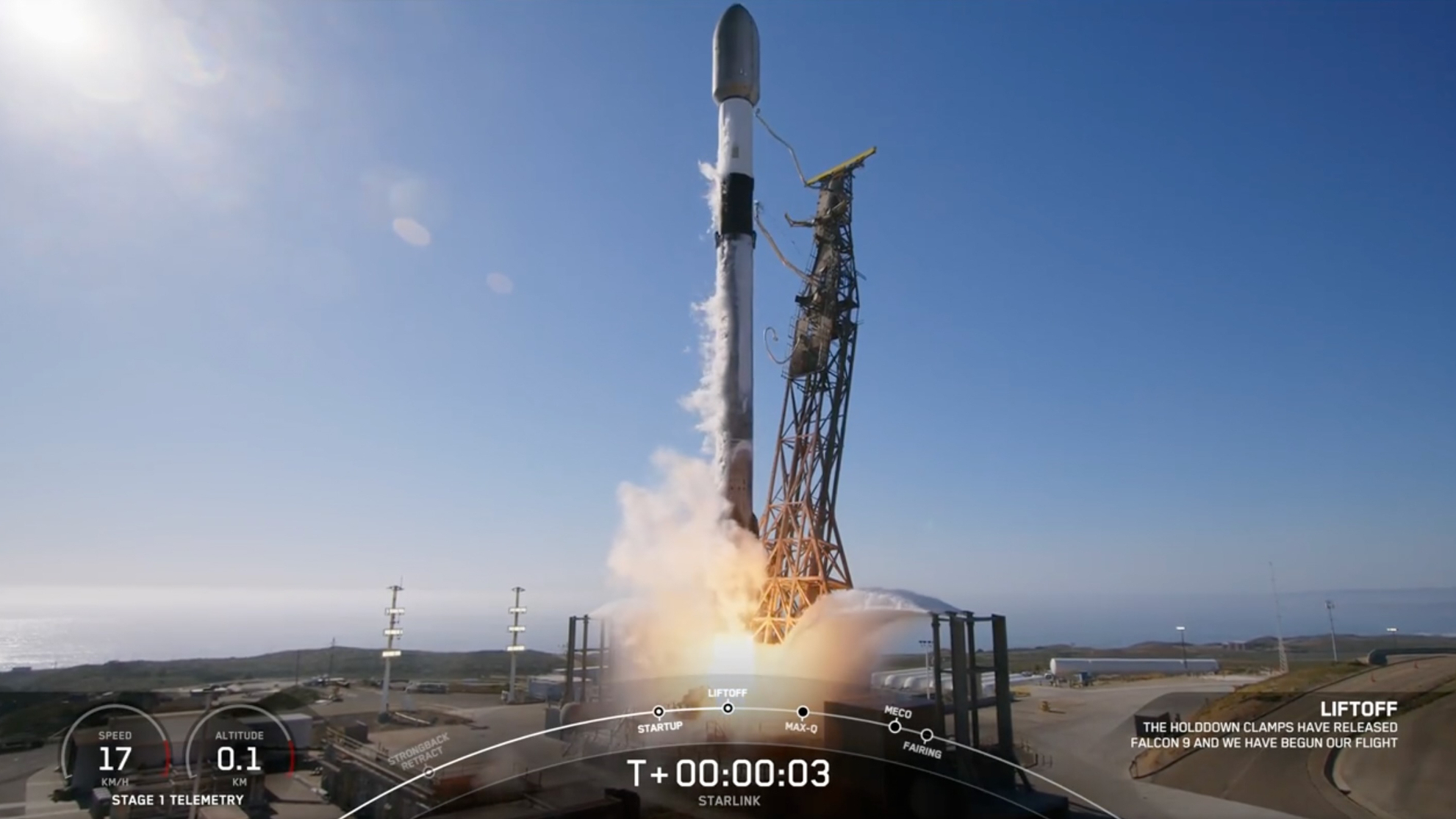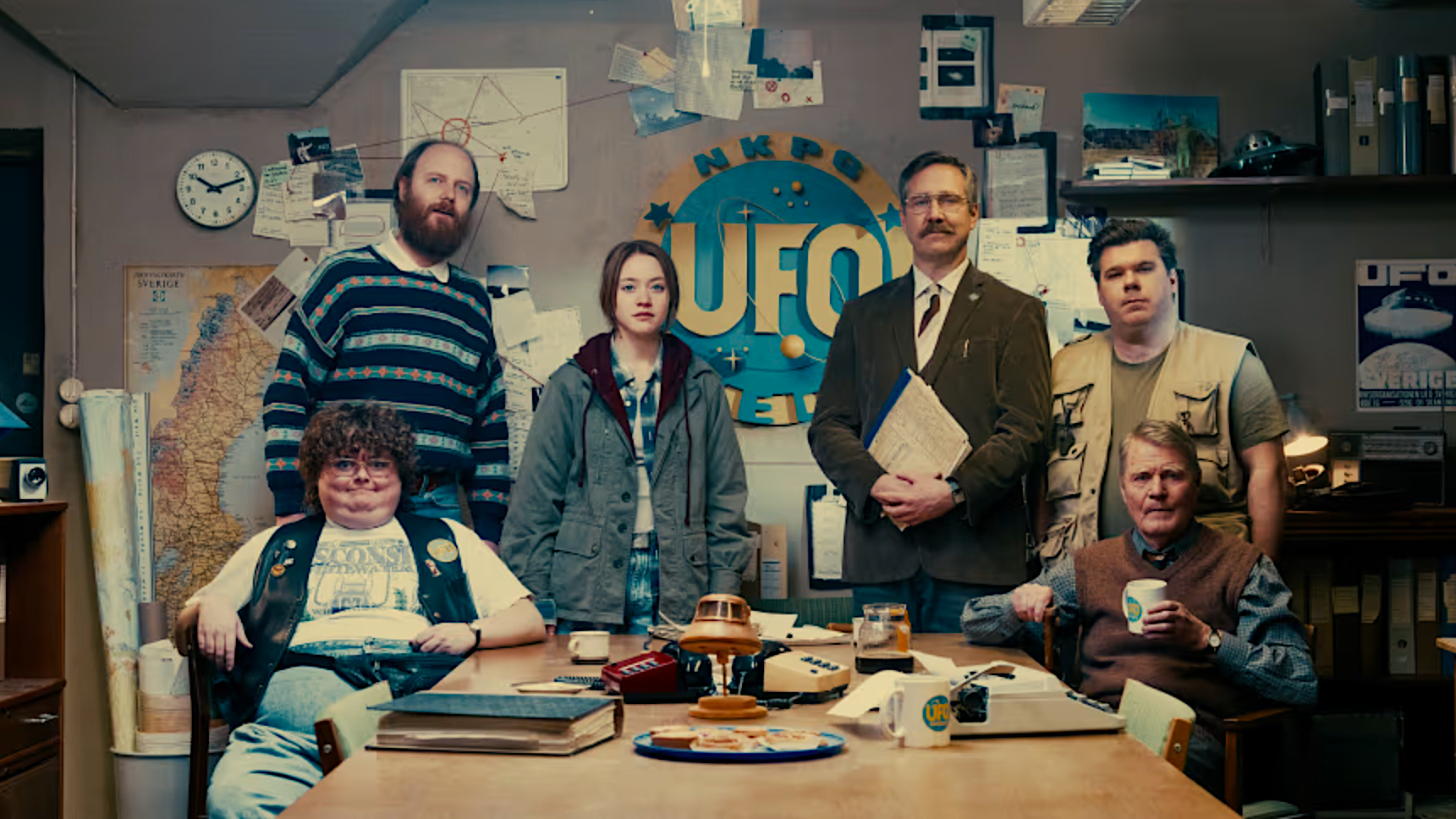Give It the Gas
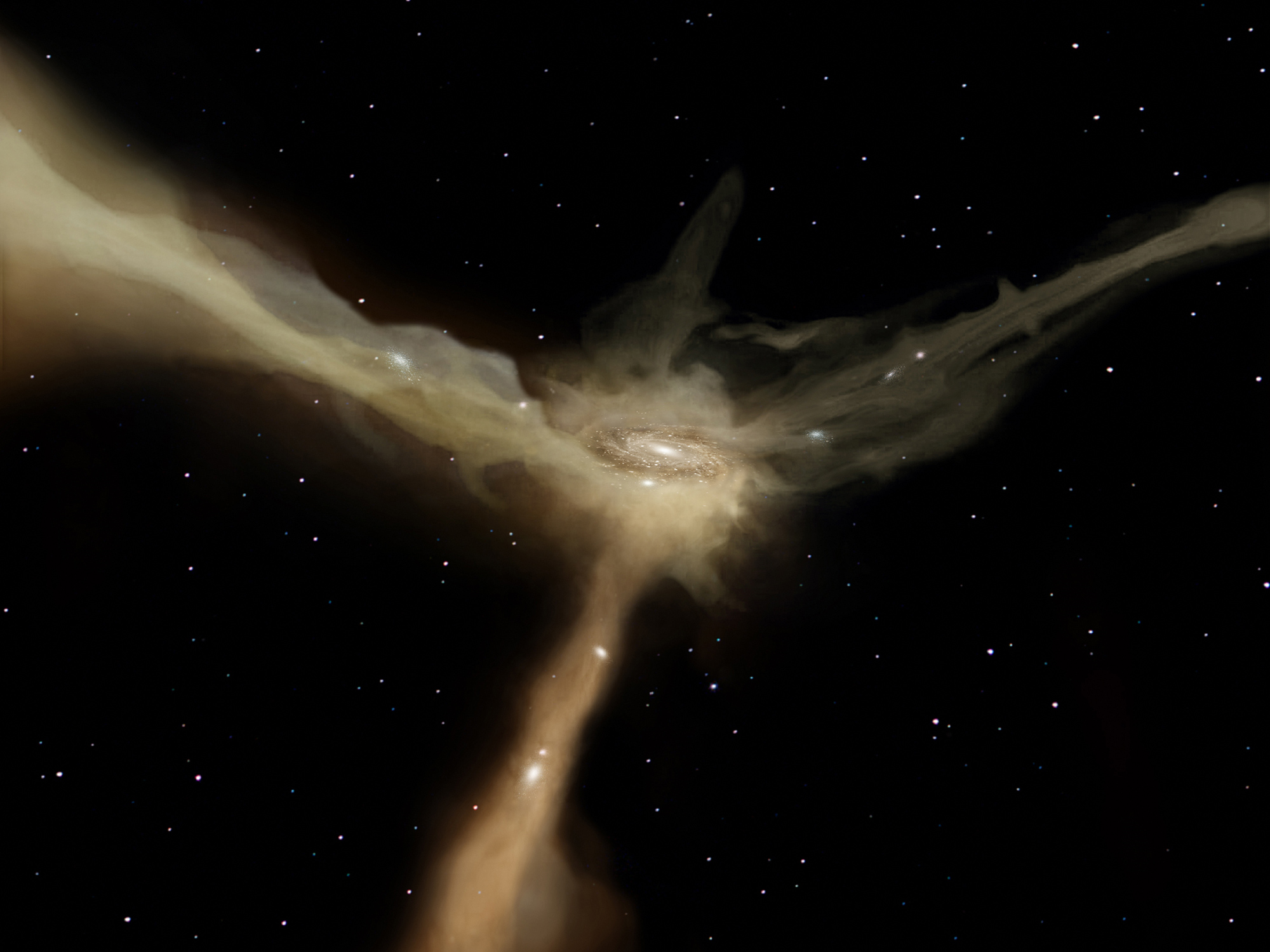
Friday, September 16, 2011: ESA's Herschel infrared space observatory discovered that galaxy collisions aren't always required for vigorous star birth in galaxy evolution. The finding overturns a long-held assumption about how galaxies evolve. In the present universe, high birth rates of stars always seem to be triggered by galaxies colliding with each other. Herschel looked at galaxies very distant, seeing them as they were billions of years ago, and thus helped researchers draw the conclusion that star birth rate depends on the quantity of gas galaxies contain, not whether they are colliding. This image shows streams of cold gas feeding a galaxy.
— Tom Chao
Just Like a Starfish
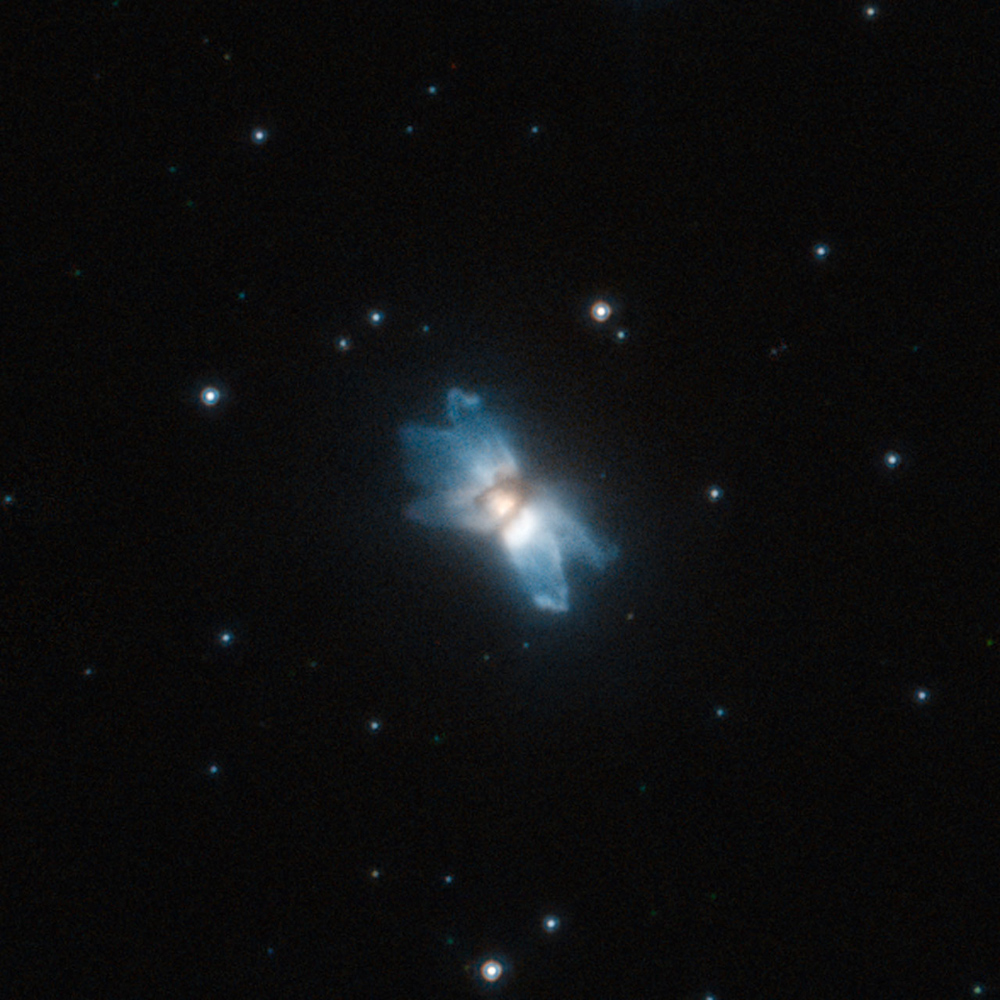
Monday, September 19, 2011: In the constellation of Aquila (the Eagle), a dying star known as IRAS 19024+0044 ejects a starfish-shaped cloud of gas and dust, as it slowly makes the transition to a white dwarf surrounded by a planetary nebula. Five blue lobes extend from the central star, although their formation is not entirely understood.
— Tom Chao
Low Red Moon
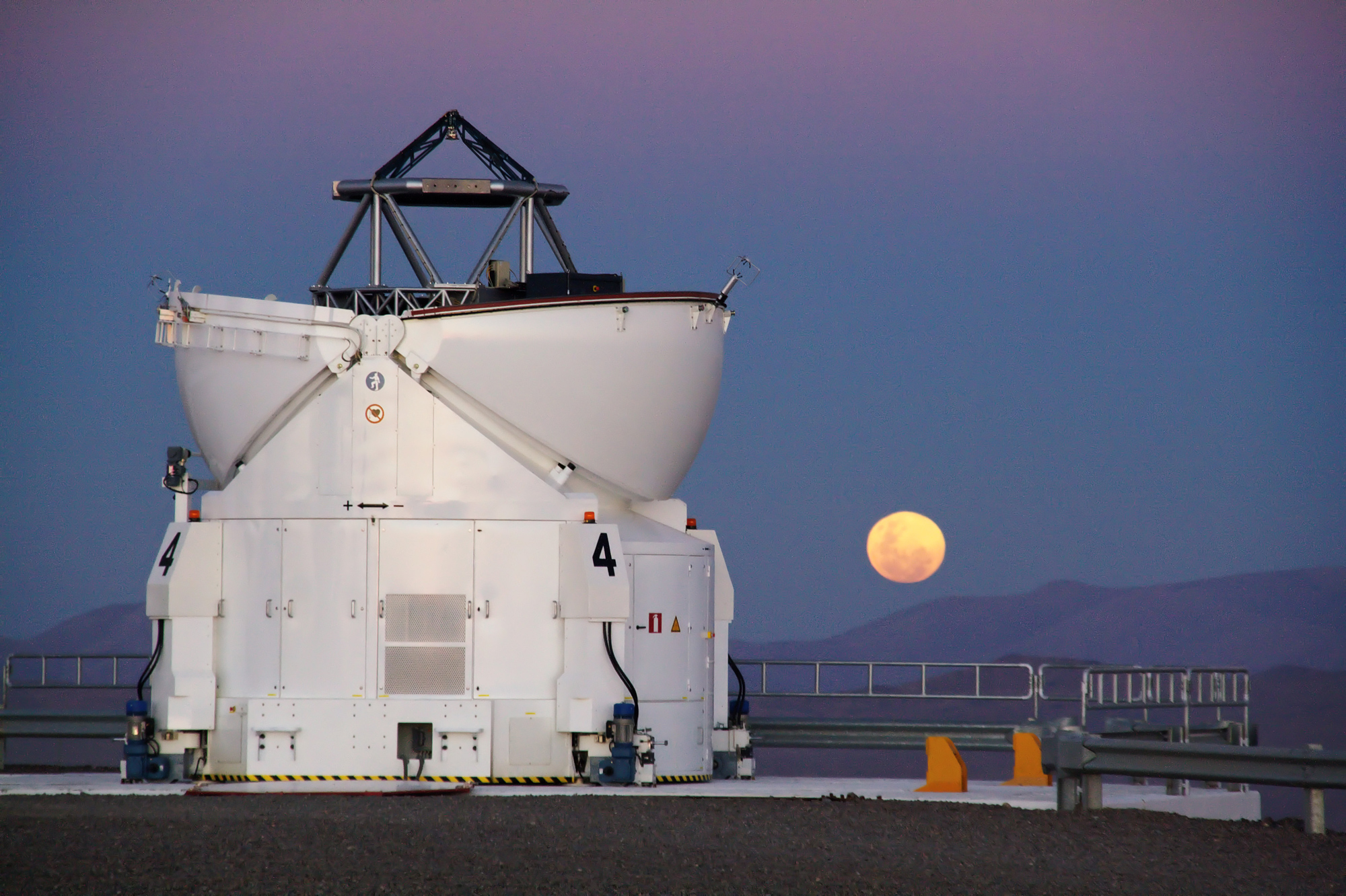
Tuesday, September 20, 2011: In Chile's Atacama Desert, at the Paranal Observatory, the moon rises reddishly with one of the four Auxiliary Telescopes standing in the foreground, on September 12, 2011. When the moon is close to the horizon, its reflected light travels through more of the atmosphere, so scattering is increased. As red light scatters less than green or blue, the moon appears reddened. However, the reddening effect is less pronounced at sites like Paranal, where the air is very clear.
— Tom Chao
Sword of Orion
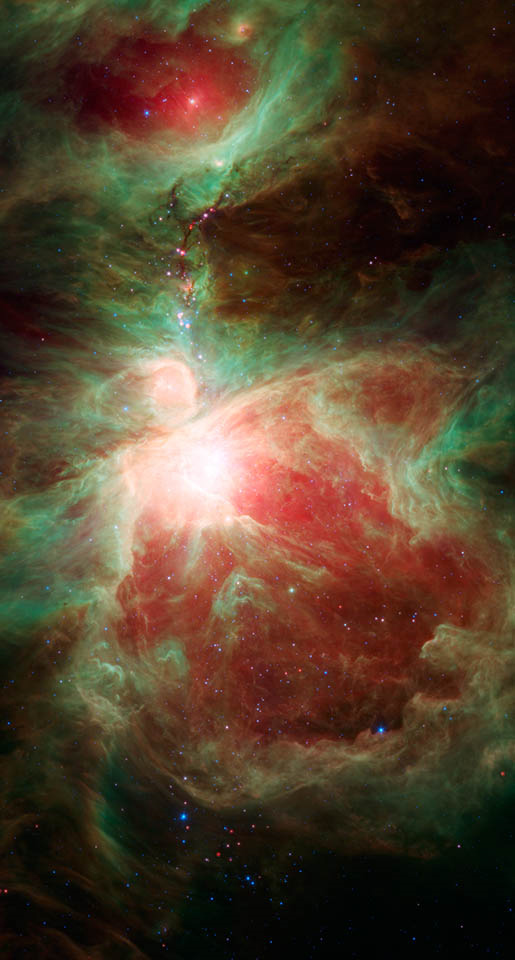
Wednesday, September 21, 2011: Near the "sword" of the constellation Orion lies an active stellar nursery containing thousands of young stars and developing protostars. Stars more massive than our sun light the Orion nebula, seen here as the bright region near the center of the image. To the north of the Orion nebula, a dark filamentary cloud of cold dust and gas, over 5 light-years in length, contains striking red protostars that line the hilt of Orion's "sword."
— Tom Chao
Eat My Dust
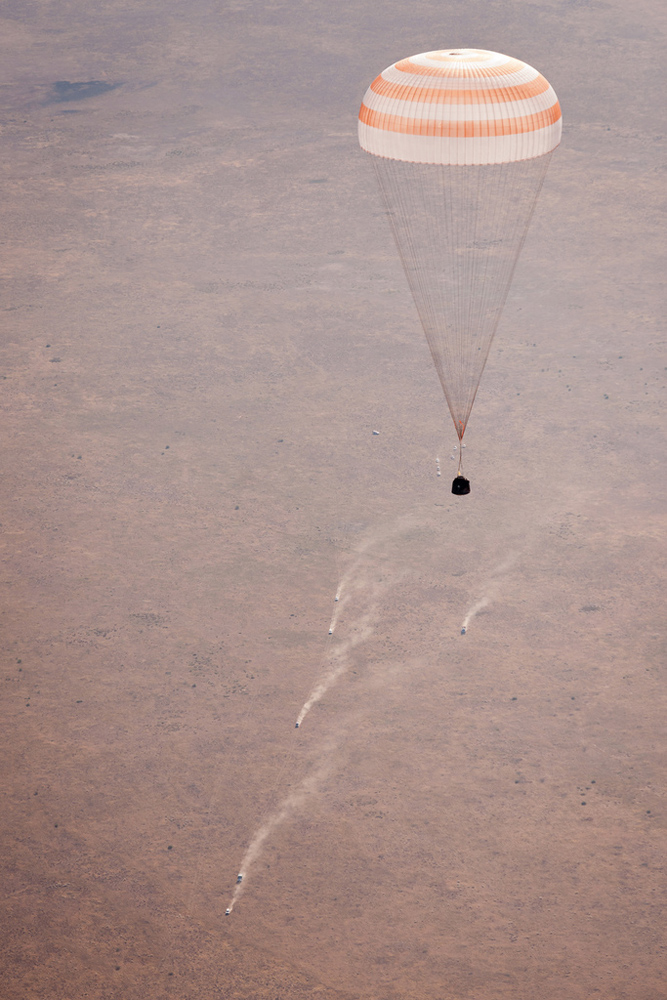
Thursday, September 22, 2011: Ground support vehicles can be seen chasing the Soyuz TMA-21 spacecraft as it lands with Expedition 28 Commander Andrey Borisenko, and Flight Engineers Ron Garan, and Alexander Samokutyaev in a remote area outside of the town of Zhezkazgan, Kazakhstan, on Friday, Sept. 16, 2011. NASA Astronaut Garan, Russian Cosmonauts Borisenko and Samokutyaev are returning from more than five months onboard the International Space Station where they served as members of the Expedition 27 and 28 crews.
— Tom Chao
I've Got a Flare
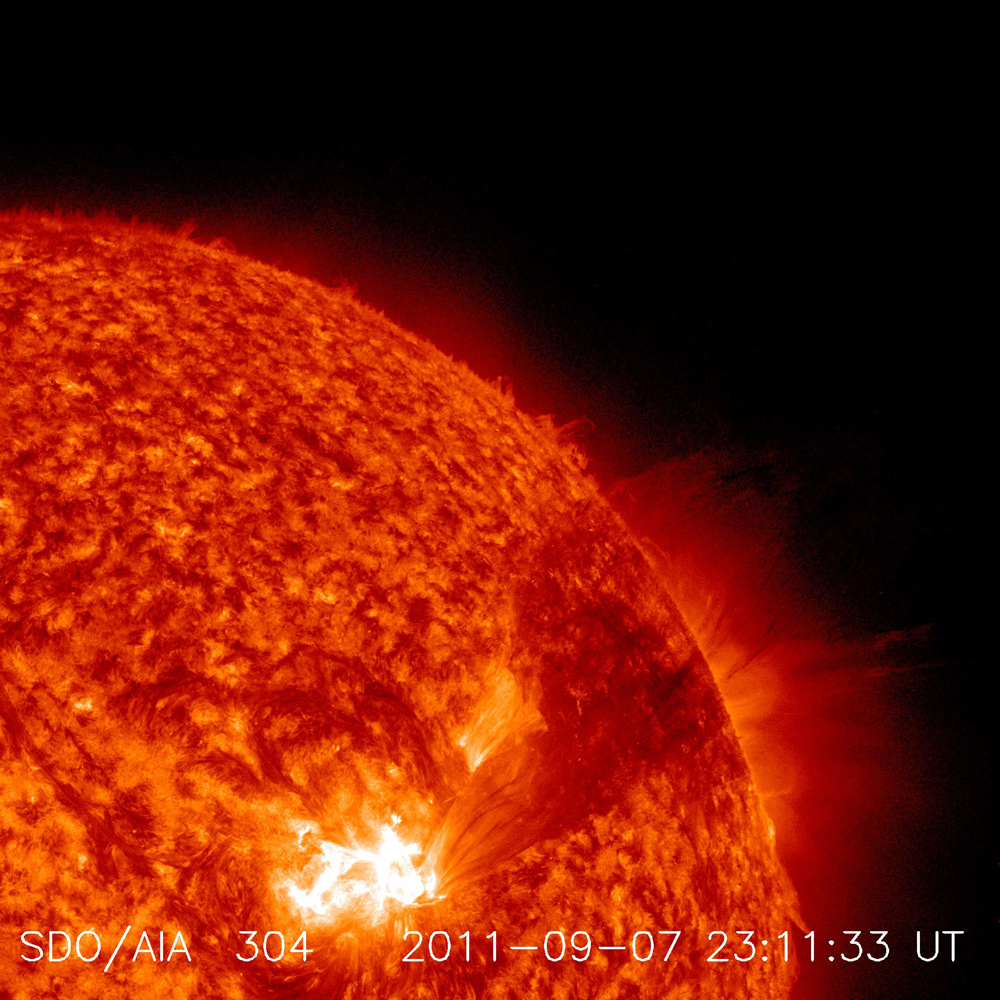
Friday, September 23, 2011: An enormous X class (strongest category) solar flare emerges from the sun, at the bright spot in the lower part of this image. The flare erupted September 7, 2011, continuing into September 8. The Solar Dynamics Observatory took the image in extreme ultraviolet (UV) light.
— Tom Chao
Blasting Through the Night
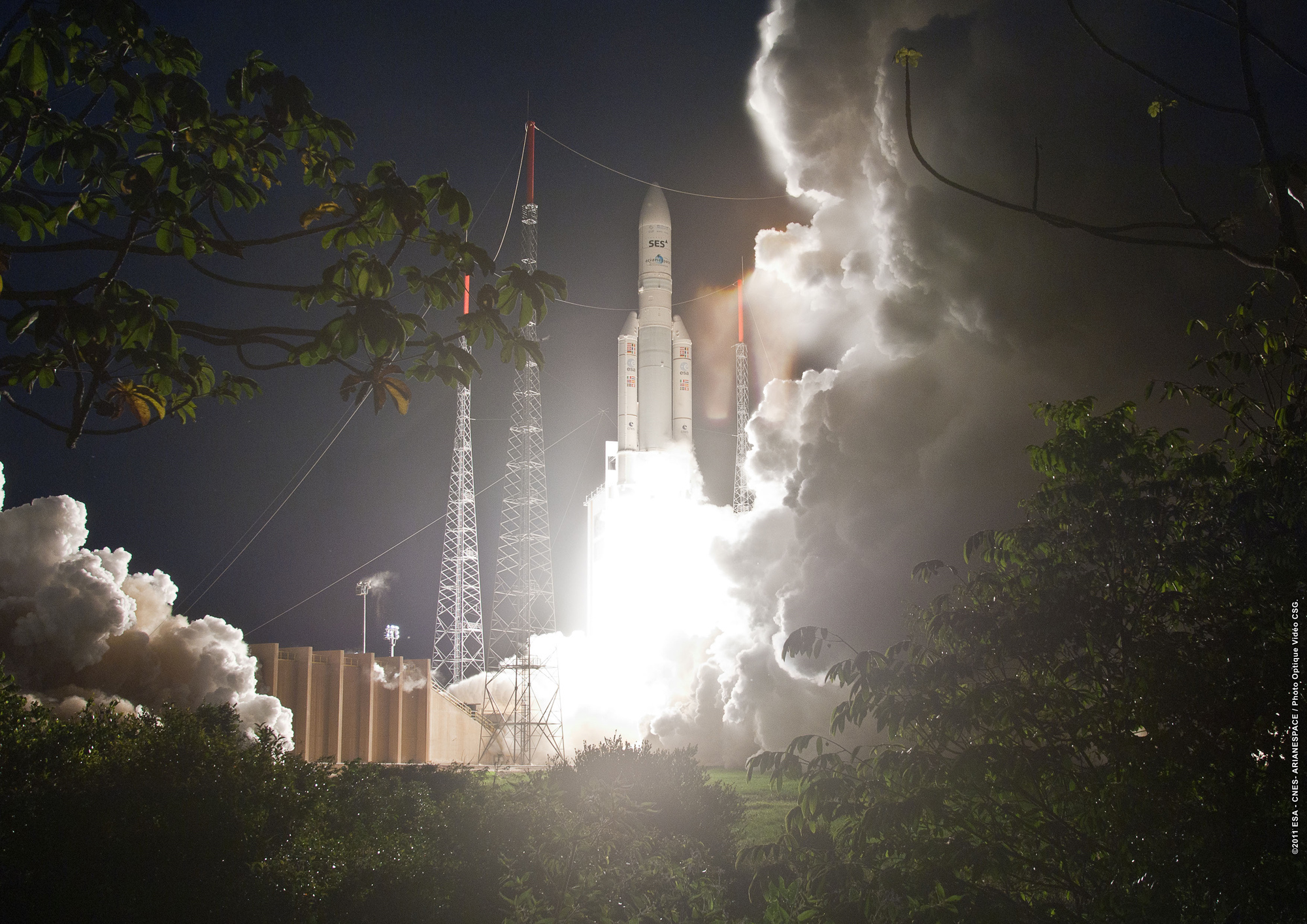
Monday, September 26, 2011: An Ariane 5 launcher blazes off the launch pad at Europe’s Spaceport in French Guiana on September 21, 2011. The rocket placed two telecommunications satellites, Arabsat-5C and SES-2, into their planned transfer orbits.
— Tom Chao
Get the Space.com Newsletter
Breaking space news, the latest updates on rocket launches, skywatching events and more!
Sunspot Baby
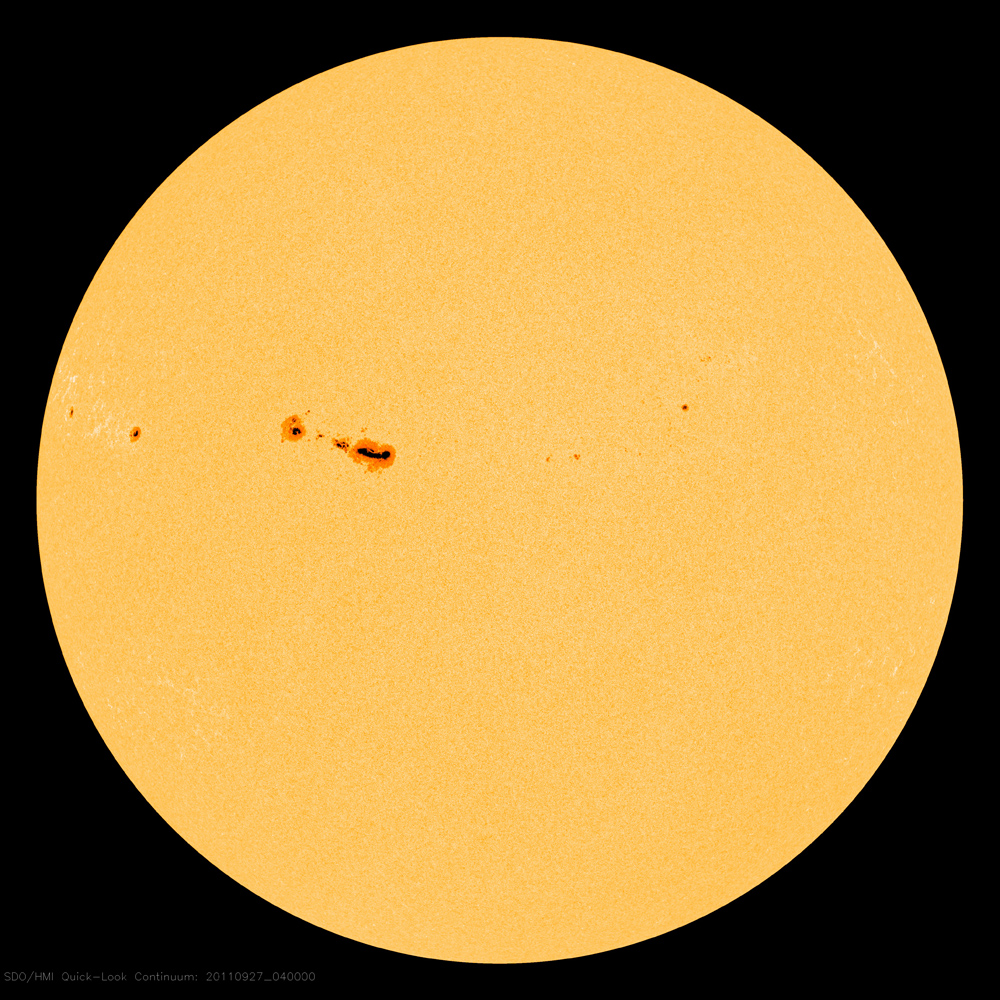
Tuesday, September 27, 2011: Sunspot 1302 (pictured in a recent Image of the Day) threatens to emit further X-class solar flares, the strongest class of solar flares. [Full Story]
— Tom Chao
The Gold It's in the … Dry Ice Pits?
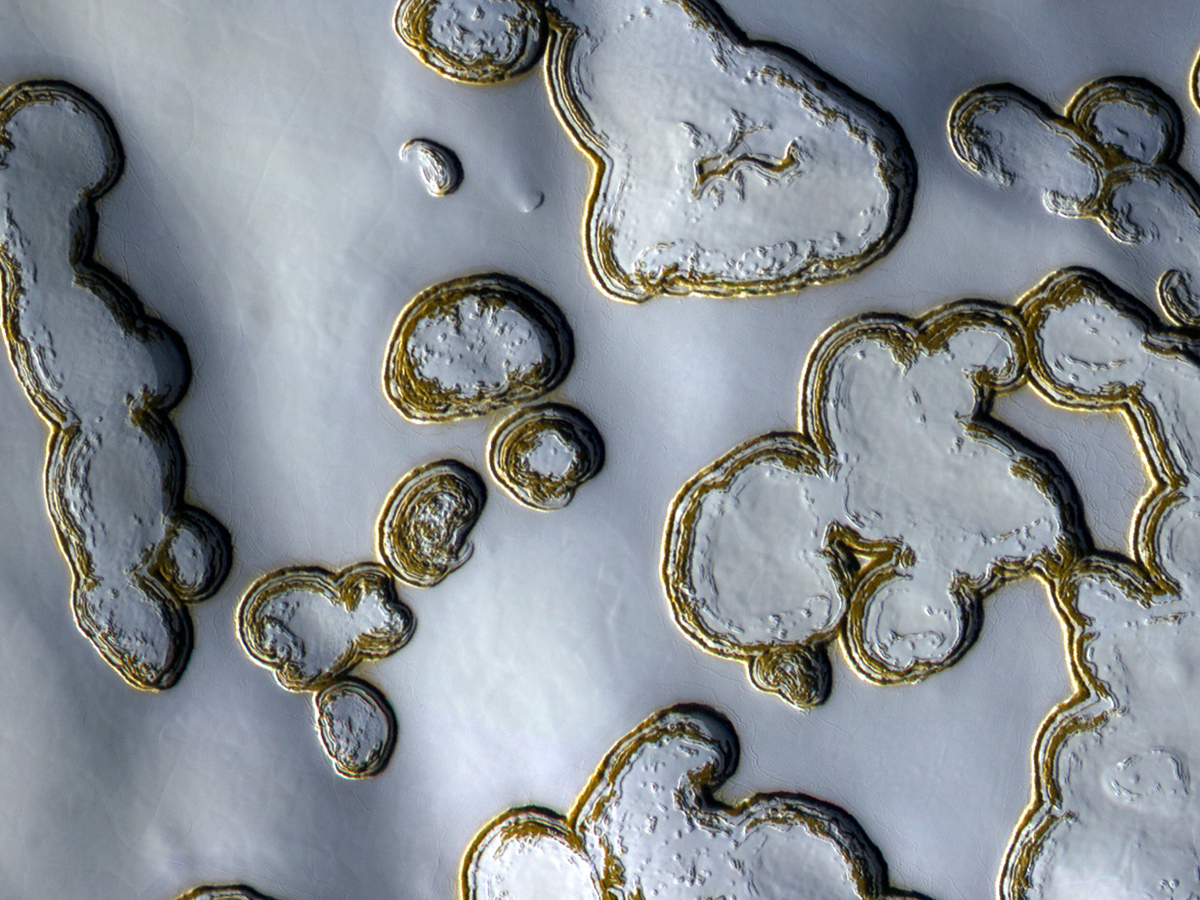
Wednesday, September 28, 2011: At the end of Martian summer, warm weather causes portions of the vast carbon-dioxide ice cap near the Martian south pole to sublimate directly into gas. Pits begin to appear and expand where the carbon dioxide dry ice disappears. The pits appear to be lined with gold, but the composition of the dust that highlights the pit walls remains unknown.
— Tom Chao
Feel the Fire Way Down Below
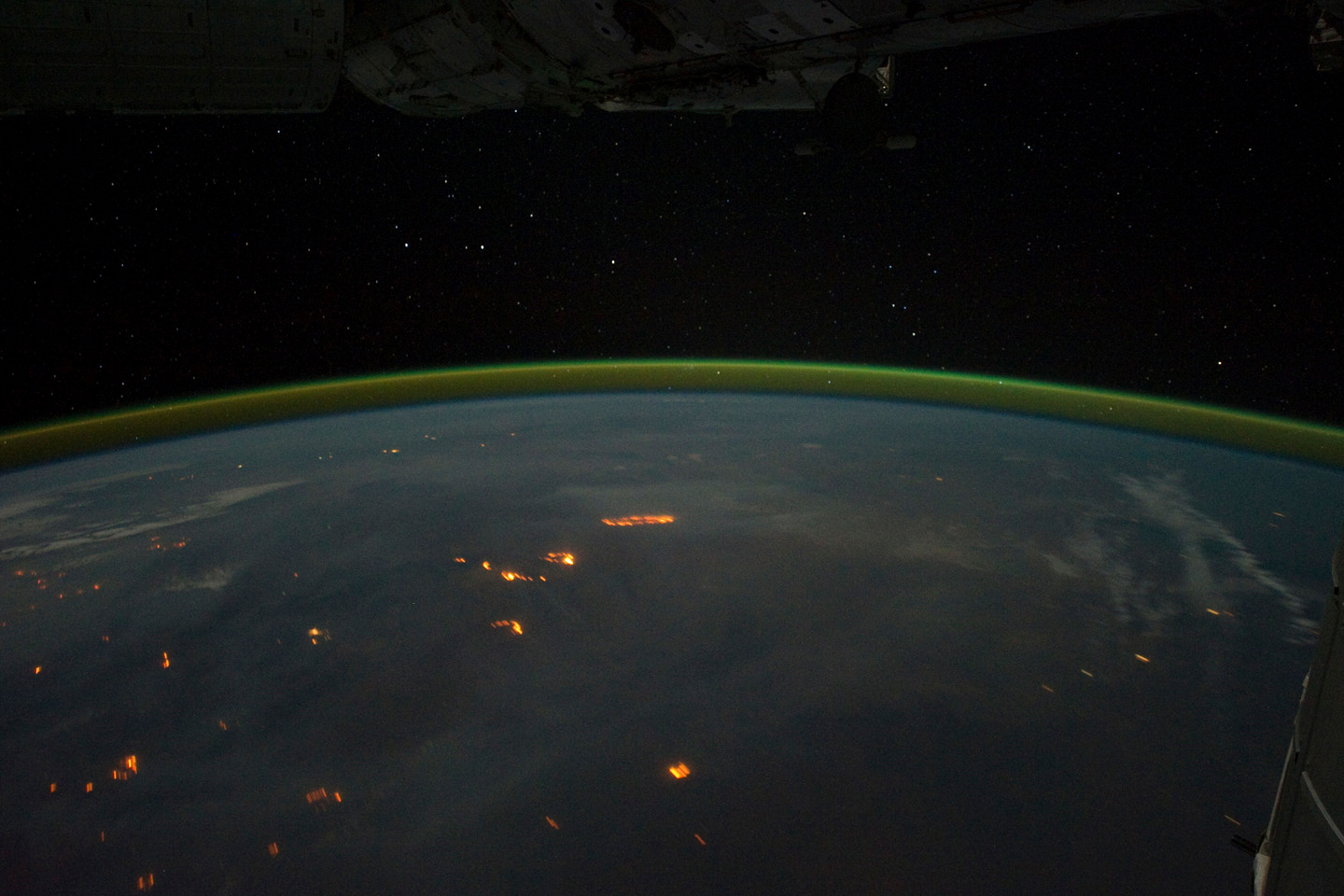
Thursday, September 29, 2011: Taken by an astronaut aboard the International Space Station, this image shows the continent of Australia glowing with orange wildfires (some may be intentionally set agricultural fires), with smoke faintly visible in the night sky. The greenish line above curve of the Earth is caused by atmospheric airglow.
— Tom Chao
Join our Space Forums to keep talking space on the latest missions, night sky and more! And if you have a news tip, correction or comment, let us know at: community@space.com.





